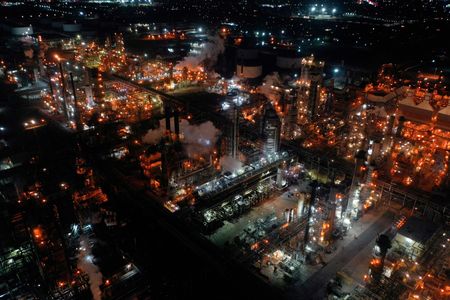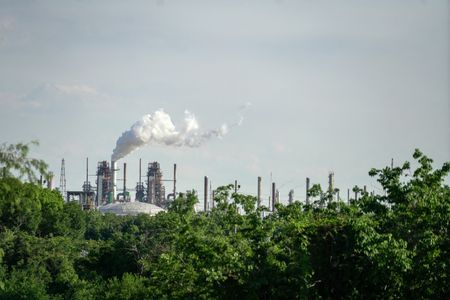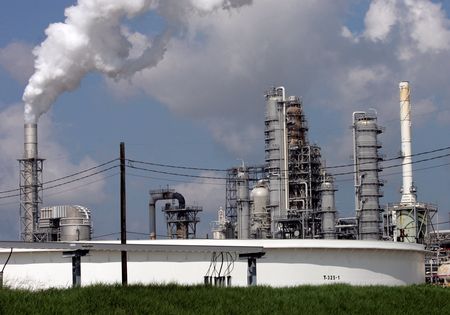By Erwin Seba
HOUSTON (Reuters) – U.S. oil refiners this quarter will run their plants at breakneck rates, near or above 90% of capacity, as tight fuel supplies spur high profits and operating rates, according to company forecasts and analysts surveyed by Reuters.
The refining industry has minted huge profits this year on buoyant demand for gasoline, diesel and jet fuel. Fourth-quarter outlooks should keep earnings high even as gasoline consumption slips during the winter.
Largest U.S. refiner Marathon Petroleum Corp aims to operate its system at 93% of combined oil processing capacity, a cooler pace as it completes maintenance work at some plants. It ran at 98% of capacity last quarter.
Second-largest Valero Energy plans to run at between 91% and 95% of capacity this quarter, while LyondellBasell Industries targets an above 90% rate, and Phillips 66 projects a low-to-mid 90% run rate, according to figures released by the companies.
Sixth-largest U.S. refiner PBF Energy has not disclosed its plan. On Oct. 25, finance chief Erik Young said the company had the cash and borrowing power to “operate our refining system at elevated utilization rates.”
PBF restarted units idled during the pandemic at its Paulsboro, N.J., plant to produce more diesel and jet fuel, with the company’s refineries running at a record-high 980,000 barrels per day last quarter, Young said.
Overall, refiners are forecasting production will remain close to third quarter levels, which averaged 92.75%, said Matthew Blair, refining analyst at researcher Tudor Pickering & Holt. If refiners overall hold their production flat “that would be really strong,” Blair said.
The plans reflect robust demand for diesel and jet fuel with U.S. inventories below the five-year average, said John Paisie, president of energy consultancy and researcher Stratas Advisors.
Diesel stocks in particular “are well below typical levels and are running at some 20% below the seasonal average,” Paisie said. He expects utilization in the U.S. “will continue to be relatively high and will average around 90% in 4Q.”
(Reporting by Erwin Seba; Editing by David Gregorio)



